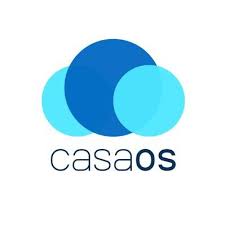What Is CasaOS? A Complete Guide to Installing and Using CasaOS
In a world where our digital lives depend heavily on the cloud, services like Google Drive, Dropbox, and iCloud have become essential. But what if you could create your own personal cloud system, completely under your control — without monthly fees or privacy concerns?
That’s where CasaOS comes in. CasaOS is an open-source personal cloud system designed to make self-hosting simple, user-friendly, and accessible for everyone — even for beginners with no prior experience in Linux or server management.
In this article, you’ll learn:
- What CasaOS is and what makes it special
- Who should use CasaOS
- How to install CasaOS on your device (including Raspberry Pi)
- How to use CasaOS to manage your files, apps, and media
- Why CasaOS might be the perfect home server solution for you
Let’s dive in!
🌐 What Is CasaOS?
CasaOS is a free and open-source home cloud operating system developed by IceWhale Technology. It transforms your PC, laptop, or single-board computer (like a Raspberry Pi) into a personal cloud platform.
In simple terms, CasaOS lets you host and manage apps, files, and media locally — just like you would on a NAS (Network Attached Storage) or cloud service — but without relying on external companies.
🔹 Key Features of CasaOS
- Beautiful Web Interface: CasaOS offers a clean, modern, and intuitive interface accessible through any browser.
- Docker App Support: You can easily install and manage containerized applications from the App Store or Docker Hub.
- File Management: CasaOS includes a built-in file manager to upload, organize, and access your files remotely.
- Cross-Device Access: Access your server from multiple devices, including phones, tablets, or computers.
- Open Source: Unlike proprietary systems, CasaOS is open-source and community-driven.
- Lightweight and Fast: It’s optimized for low-power devices like the Raspberry Pi, yet powerful enough for full PCs.
👥 Who Needs CasaOS?
CasaOS isn’t just for tech enthusiasts — it’s built for anyone who values control, privacy, and flexibility over their digital life.
Here are some types of users who will benefit the most:
1. 🧑💻 Home Server Enthusiasts
If you love tinkering with home automation, media servers, or cloud systems, CasaOS is a dream come true. It provides a clean foundation to host apps like Nextcloud, Jellyfin, Plex, or Home Assistant.
2. 📁 Privacy-Conscious Users
CasaOS allows you to keep your data completely private, as everything is stored locally on your own hardware. No third parties can access your photos, documents, or videos.
3. 🎥 Media Lovers
You can use CasaOS as a home media center to store and stream movies, music, or photos to your TV, phone, or tablet using apps like Jellyfin or Plex.
4. 💼 Small Businesses and Freelancers
Freelancers or small business owners can use CasaOS to host project files, manage backups, and share documents securely with clients.
5. 💡 Students and Learners
CasaOS is an excellent educational tool for anyone interested in learning about Docker, Linux, or self-hosting in a user-friendly way.
⚙️ How to Install CasaOS
Installing CasaOS is surprisingly easy. You don’t need advanced technical knowledge — just basic familiarity with terminal commands and access to your hardware.
🧩 Requirements
Before installing CasaOS, make sure you have:
- A PC, Raspberry Pi, or mini server
- At least 2GB RAM and 16GB storage
- A Linux-based OS (Ubuntu/Debian recommended)
- Internet connection
💡 Pro Tip: Raspberry Pi 4 or higher works perfectly for lightweight home cloud setups.
🪜 Step-by-Step Installation Guide
Step 1: Update Your System
First, update your system to make sure everything is up-to-date.
sudo apt update && sudo apt upgrade -y
Step 2: Install CasaOS
Next, install CasaOS with a single command:
curl -fsSL https://get.casaos.io | sudo bash
This command automatically downloads and installs CasaOS and its dependencies.
Step 3: Access CasaOS
After installation, open your web browser and go to:
http://your-device-ip:80
You’ll be greeted by the CasaOS dashboard — clean, minimal, and ready to go.
🖥️ How to Use CasaOS
Once installed, you can start customizing your personal cloud.
🧭 1. Explore the Dashboard
The CasaOS dashboard shows system info, storage usage, and app management tools. You can easily navigate between:
- App Store — to install apps
- Files — to manage documents and media
- Settings — to configure users and storage
📦 2. Install Your Favorite Apps
One of CasaOS’s biggest strengths is its App Store, which offers one-click installation for popular applications like:
- Nextcloud – your personal cloud storage
- Jellyfin – a media server for movies and shows
- Home Assistant – smart home automation
- qBittorrent – torrent download manager
- PhotoPrism – photo management system
You can also install custom Docker containers from Docker Hub directly through the interface.
📂 3. Manage Your Files
CasaOS includes a powerful file manager where you can:
- Upload/download files
- Create folders
- Rename and delete items
- Share files across your network
You can access your files remotely through your browser or connect via Samba (SMB) for local network access.
🔐 4. Secure Your Server
CasaOS allows you to set passwords and access control to ensure your data stays private. You can also configure:
- HTTPS access (via reverse proxy or domain)
- Local backups to external drives
- Firewall rules for added protection
🚀 Why CasaOS Stands Out
CasaOS is not the only self-hosted platform out there — but it’s one of the easiest to use. Compared to alternatives like OpenMediaVault, TrueNAS, or Nextcloud, CasaOS offers:
| Feature | CasaOS | TrueNAS | OpenMediaVault |
|---|---|---|---|
| User-Friendly UI | ✅ | ❌ | ⚠️ |
| Docker App Store | ✅ | ⚠️ | ✅ |
| Easy Installation | ✅ | ❌ | ⚠️ |
| Lightweight | ✅ | ❌ | ✅ |
| Ideal for Raspberry Pi | ✅ | ❌ | ✅ |
CasaOS is perfect for those who want a plug-and-play personal cloud system without diving deep into complex configurations.
🧠 Tips and Best Practices
- 💾 Use SSD storage for faster performance
- 🌍 Set up remote access with a secure VPN
- 🔁 Backup regularly to an external drive
- 🔧 Keep CasaOS updated to get new features
- 🧩 Explore community apps for more functionality
🧭 Final Thoughts
CasaOS bridges the gap between simplicity and self-hosting power. Whether you’re building a small home cloud, running a media server, or experimenting with Docker apps, CasaOS provides a beautiful, beginner-friendly platform that gives you full control of your digital environment.
If you’ve ever dreamed of running your own cloud — CasaOS makes it possible.
🚀 Start building your personal cloud today with CasaOS — and take control of your data, privacy, and freedom.





